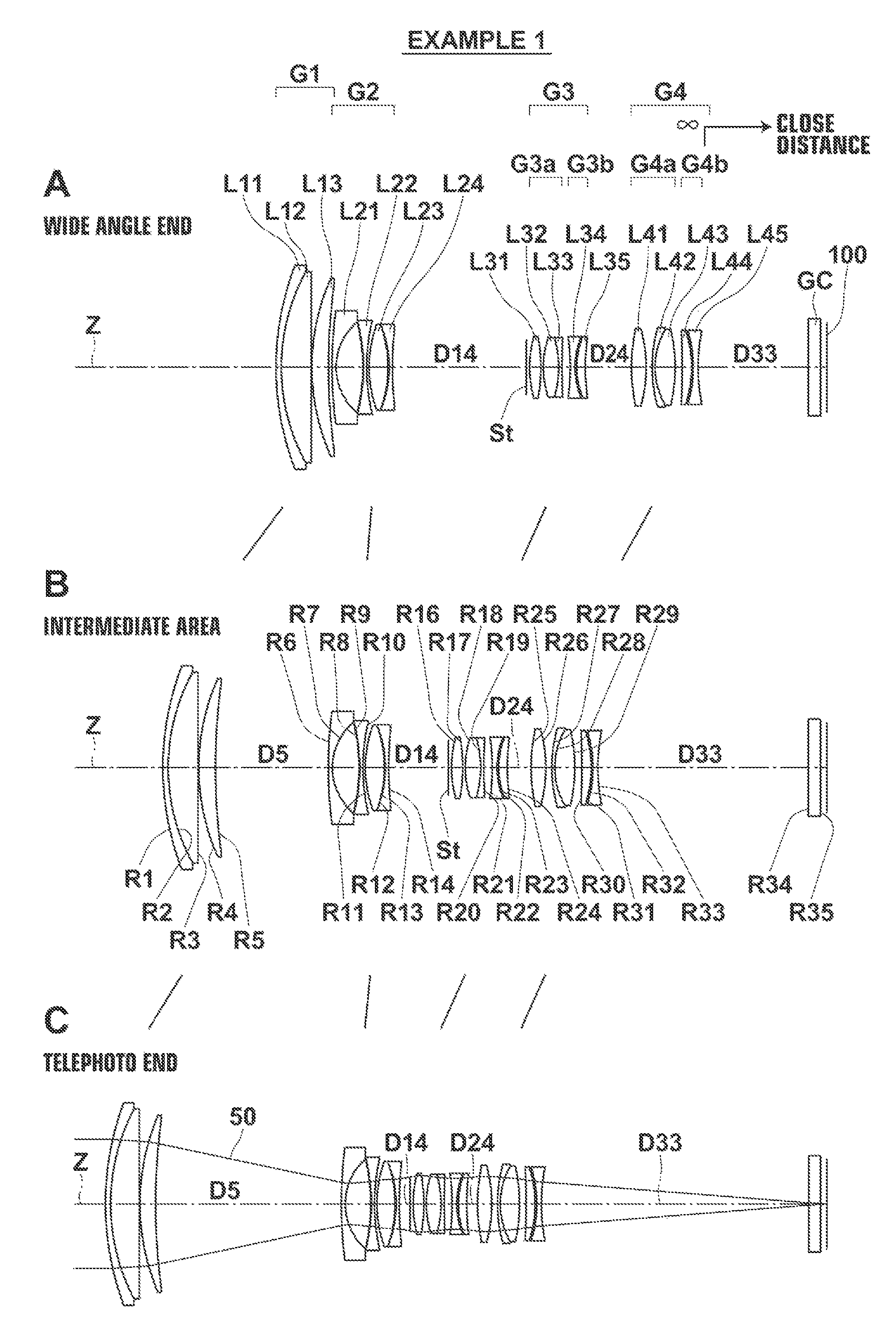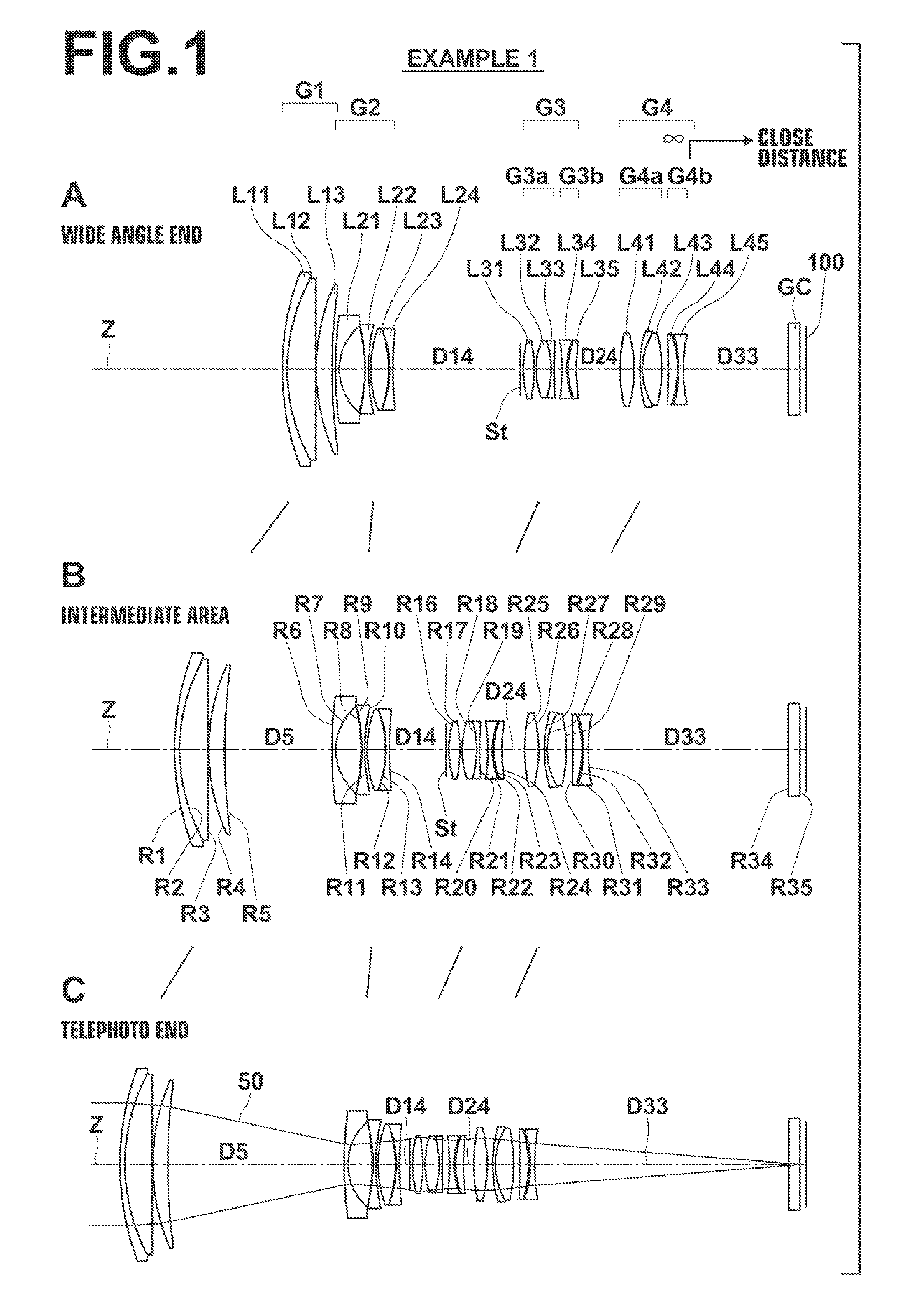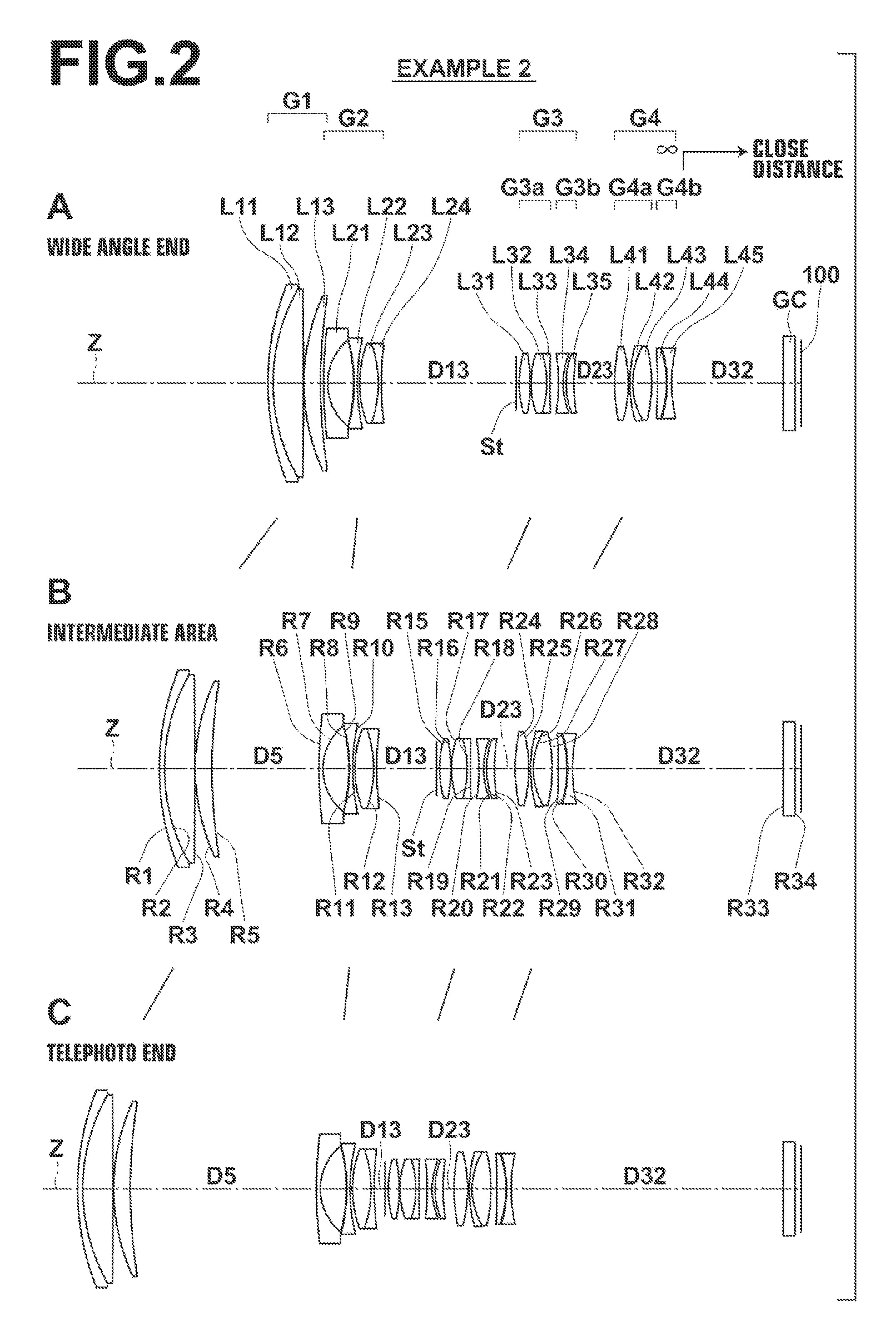Zoom lens and imaging apparatus
a zoom lens and imaging apparatus technology, applied in the field of zoom lens and imaging apparatus, can solve the problems of insufficient miniaturization of the optical system, inability to secure, and short back focus at the wide angle end, and achieve the effects of small size, high performance and small siz
- Summary
- Abstract
- Description
- Claims
- Application Information
AI Technical Summary
Benefits of technology
Problems solved by technology
Method used
Image
Examples
example 1
[0069]A, B, and C of FIG. 1 are diagrams illustrating configurations of the zoom lens according to Example 1 of the present invention.
[0070]The first lens group G1 of the zoom lens according to Example 1 substantially consists of a 1-1st lens L11 having a negative meniscus shape with a concave surface toward the image side, a 1-2nd lens L12 having a positive biconvex shape, and a 1-3rd lens L13 having a positive meniscus shape with a convex surface toward the object side in this order from the object side. A cemented lens is formed by cementing the 1-1st lens L11 and the 1-2nd lens L12 together.
[0071]The second lens group G2 substantially consists of a 2-1st lens L21 having a negative meniscus shape with a concave surface toward the image side, a 2-2nd lens L22 having a negative biconcave shape, a 2-3rd lens L23 having a positive biconvex shape, and a 2-4th lens L24 having a negative biconcave shape in this order from the object side. The 2-2nd lens L22 is a compound aspheric lens. ...
examples 2 and 3
[0084]A, B, and C of FIG. 2 show configurations of the zoom lens according to Example 2 of the present invention, and A, B, and C of FIG. 3 show configurations of the zoom lens according to Example 3 of the present invention. The zoom lenses according to Examples 2 and 3 have substantially the same configuration as the zoom lens according to Example 1. However, Examples 2 and 3 differ from Example 1 in that a cemented lens is formed by cementing a 2-3rd lens L23 of the second lens group G2 and a 2-4th lens L24 thereof together, and accordingly, the surface numbers of the lenses on the image side of the 2-4th lens L24 are shifted by one from those of Example 1.
[0085]In the same manner as Example 1 described above, specific lens data of the zoom lens according to Example 2 is shown in Tables 4 through 6. In addition, specific lens data of the zoom lens according to Example 3 is shown in Tables 7 through 9. Note that each of the zoom lenses according to Examples 2 and 3 is configured s...
example 4
[0086]A, B, and C of FIG. 4 show configurations of the zoom lens according to Example 4 of the present invention. The zoom lens of Example 4 has substantially the same configuration as the zoom lens according to Example 1. However, the zoom lens of Example 4 differs from that of Example 1 in that the 2-3rd lens L23 of the second lens group G2 and the 2-4th lens L24 thereof are cemented to each other so as to form a cemented lens, and accordingly, surface numbers of the image-side surfaces from the 2-4th lens L24 are shifted by one from those of Example 1; and in that the third-b lens group G3b substantially consists of a 3-4th lens L34 having a positive meniscus shape with a convex surface toward the image side and a 3-5th lens L35 having a negative biconcave shape in this order from the object side.
[0087]In the same manner as for Example 1 described above, specific lens data of the zoom lens according to Example 4 is shown in Tables 10 through 12. Note that the zoom lens according ...
PUM
 Login to View More
Login to View More Abstract
Description
Claims
Application Information
 Login to View More
Login to View More - R&D
- Intellectual Property
- Life Sciences
- Materials
- Tech Scout
- Unparalleled Data Quality
- Higher Quality Content
- 60% Fewer Hallucinations
Browse by: Latest US Patents, China's latest patents, Technical Efficacy Thesaurus, Application Domain, Technology Topic, Popular Technical Reports.
© 2025 PatSnap. All rights reserved.Legal|Privacy policy|Modern Slavery Act Transparency Statement|Sitemap|About US| Contact US: help@patsnap.com



